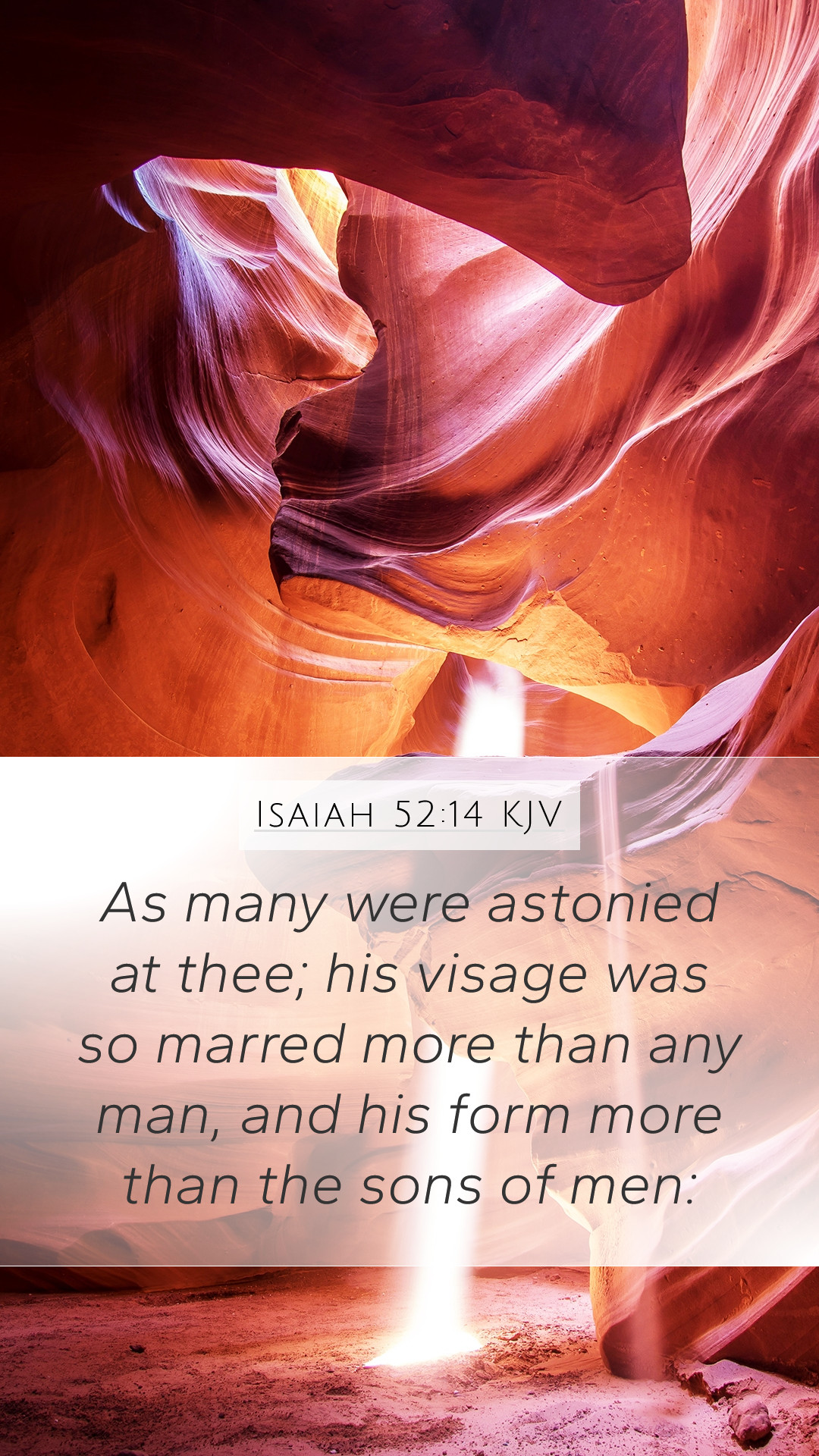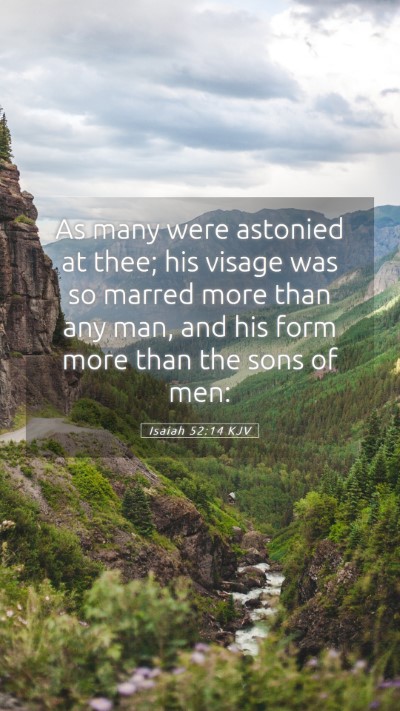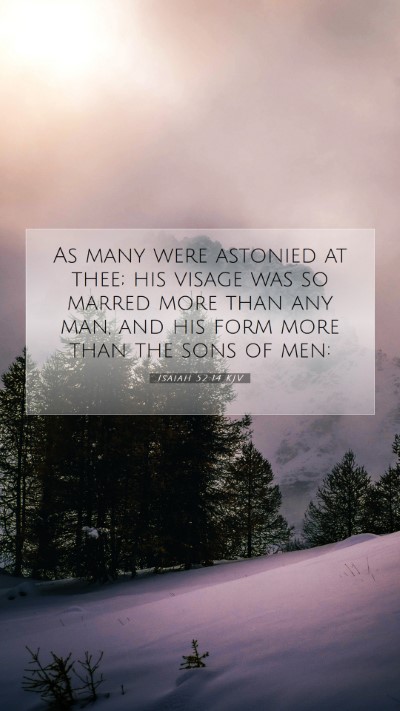Understanding Isaiah 52:14
Isaiah 52:14 states:
"Just as there were many who were appalled at him—his appearance was so disfigured beyond that of any human being and his form marred beyond human likeness." (Isaiah 52:14, NIV)
This verse is a profound declaration concerning the suffering servant, which is a pivotal theme in the book of Isaiah. It illustrates the immense suffering and humiliation that the servant endured.
Bible Verse Meanings
According to Matthew Henry's commentary, this verse showcases the extent of Christ's agony. The stark description emphasizes that His physical appearance was so marred that He was hardly recognizable as a human, which reflects the severity of His afflictions.
- Public Reaction: The phrase "many were appalled" suggests a collective horror at the sight of the servant, highlighting the profound impact of His suffering on onlookers.
- Human Experience: Henry notes that this image points not only to Jesus Christ's physical suffering but also to the spiritual desolation He bore on behalf of humanity.
Bible Verse Interpretations
Albert Barnes elaborates that this verse symbolizes the depth of the servant's suffering, presenting a stark contrast to the typical expectations of a mighty savior. Instead of coming in glory, the servant faces deep humiliation and rejection.
Additionally, Barnes connects this to the overall narrative of redemption, demonstrating that through such suffering, a profound atonement is achieved. The servant's disfigurement symbolizes the spiritual brokenness that sin brings to humanity.
Spiritual Significance
Adam Clarke provides insight into the theological implications of this verse. He reflects on how the disfigurement of the servant is indicative of the price that must be paid for redemption.
- Atonement: Clarke emphasizes that Christ's sufferings are not merely physical but extend into the realm of spiritual atonement.
- Fulfillment of Prophecy: This foreshadowing of Christ's passion reflects prophecies found throughout Scriptures, pointing to the significance of His sacrifice.
Key Themes in Isaiah 52:14
Suffering and Sacrifice: The central theme of Isaiah 52:14 revolves around the suffering servant and His ultimate sacrifice. This theme resonates throughout the New Testament, particularly in the Gospels that narrate the passion of Christ.
Rejection and Humility: Another significant theme is that of rejection. Isaiah's portrayal of the servant is to illustrate that true strength is often accompanied by lowliness and suffering, contrasting worldly expectations of power and authority.
Application for Bible Study
For those engaged in Bible study groups or online Bible study, Isaiah 52:14 can serve as a focal point for discussions on the nature of suffering, the meaning of true service, and the importance of humility in the Christian life.
Utilizing Bible study tools such as commentaries and dictionaries can greatly enhance understanding of this profound message.
Cross References
This verse relates closely to several other passages in the Bible that deepen our understanding:
- Isaiah 53:2-3: Further describes the servant as having no appearance or majesty.
- John 1:10-11: Illustrates the rejection of Christ by His own.
- Philippians 2:7-8: Describes Christ's humility and obedience to death.
Conclusion
Isaiah 52:14 serves as a powerful reminder of the depths of Christ’s suffering and the significance of His sacrifice for humanity. Through careful exploration of this verse using various Bible study resources and insights from public domain commentaries, we gain a deeper understanding of Scripture and the profound implications of the suffering servant.


